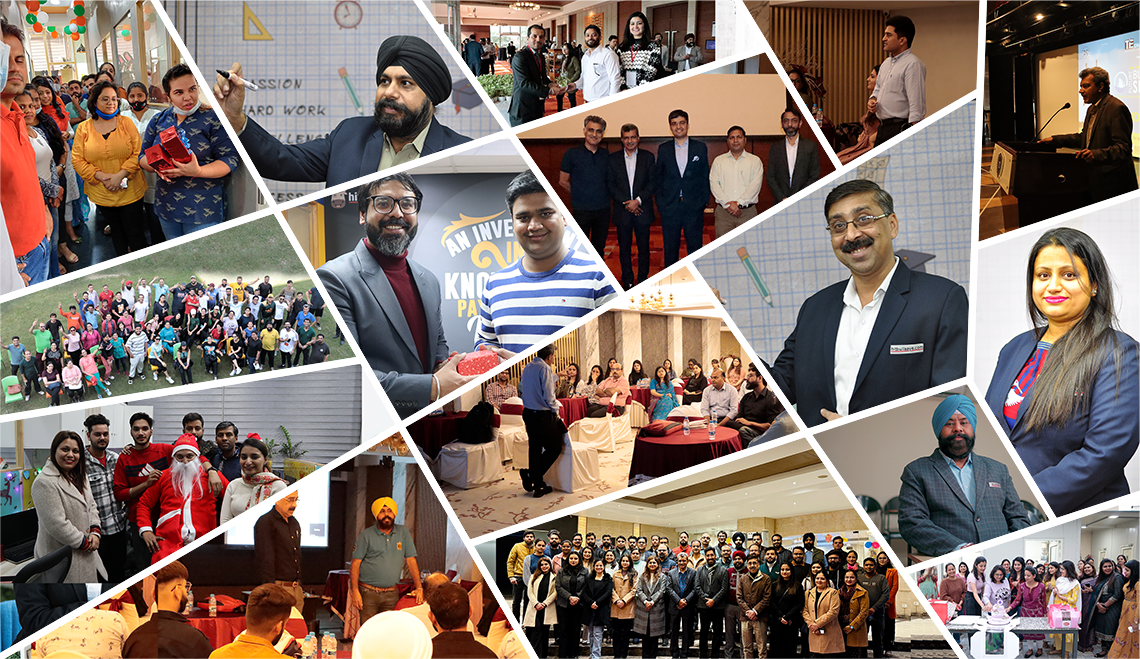Secure Xtra Edge with the Undisputed Leader in CUET Prep
CUET - Physical Education Sample Papers
200+ Practice Questions by NCERT Experts, SRCC & Top Colleges Alumni
Secure Xtra Edge with the Undisputed Leader in CUET Prep
200+ Practice Questions by NCERT Experts, SRCC & Top Colleges Alumni

Know more about Exam
Everybody teaches, but not LIKE US. We have built a world class academic delivery model basis in-depth understanding of a Learner’s needs.
Trust a decade of pedigree to unearth your true potential
1500 + Practice Questions for GAT, English and Subjects
Free Master Classes by Ace Trainers
35+ Videos & eBooks
GK & Current Affair Resources

Our Hitbullseye team is a league of dedicated mentors who work hard to make your dreams come true!
Gold Medalists
PhD Scholars
Published Authors
Math Wizards
IIT-IIM Alumni
Practicing CAs

Hear from Hitbullseye achievers who scored a perfect 200 in CUET 2024 about how our guidance led to their success. Trust the dream team & become the next success story.
Our students receive 1000's calls from Top Colleges every year. You can be the next one!
CUET Success made simple!
The CUET Exam is a highly anticipated test that can open the doors to your desired college or university. Excelling in this exam requires effective preparation and access to quality study materials. In this article, we will provide you with valuable CUET Physical Education study material to enhance your chances of success. Read on to discover how to access these resources and boost your performance on the CUET Exam.
The Common University Entrance Test (CUET) is a national-level entrance test conducted by the NTA for admissions to undergraduate programs at central and state universities. Candidates from all across the nation would be given the same opportunities and a centralized form via the Central University Entrance Test (CUET), which would assist their admission into central institutions to pursue their education.
The National Testing Agency is expected to organize CUET in the last weeks of May. The mode of exam will be a computer-based test. The NTA has scheduled the examination in 3 slots, ie, morning, afternoon, and evening sessions. The CUET examination will be broken up into three sections. The exams for the languages may be found in Section 1. The second half of the examination focuses more on the domain-specific test, while the third section is based on the general aptitude test. Candidates for the CUET exam are allowed to choose their preferred instructional medium from among the 13 distinct languages that are available to them. There are a total of fifty questions in the language and domain subjects section and 60 questions in the case of GAT.
The National Testing Agency will share the CUET Physical Education Syllabus to assist candidates in preparing for the exam. The comprehensive syllabus covers various topics such as Sociological Aspects of Physical Education, Training Methods, and more. Familiarizing oneself with the CUET Exam Pattern is crucial for understanding the test format.
Let's look at the CUET Syllabus of Physical Education in all of its granularity, breaking it down into its units.
| CUET Physical Education Syllabus | |
|---|---|
Unit I: Sociological Aspects of Physical Education |
(i) Games and sports as man's cultural heritage - An understanding that sports have been a part of our culture and tradition since time immemorial.(ii) Development of the individual through games and sports Understanding how games and sports contribute in various ways toward the development of an individual.(iii) Role of Physical Education in promoting national integration - How Physical Education helps in promoting National Integration.(iv) Physical Education and personality development - The role of Physical education in developing personal qualities like an individual attitude, discipline, helpfulness, team spirit,patience, unity, friendship, etc. |
Unit II: Training Methods |
(i) Meaning and importance of Sports Training. - Definition of Sports Training and its importance.(ii) Methods of Training: - Repetition, continuous & fartlek, and interval - Definition, purpose, advantages, and procedure of each. - Advantages of warming up, conditioning, and cooling/limbering.(iii) Isometric and Isotonic exercises. - Meaning, advantages, and examples of each.(iv) Circuit Training. - Meaning and advantages of circuit training; - the procedure of conducting circuit training.(v) Weight Training. - Meaning and advantages of weight training.Understanding how the above training methods help an individual in different sports and help develop strength, speed, stamina, skill, and endurance. |
Unit III: Career Aspects in Physical Education |
(i) Career options in Physical Education - Professional sportsmen, sports managers, teachers/lecturers, sports coaches, gym instructors, sports officials, sports events coordinators, sports journalists and commentators, sports software engineers, and marketing and manufacturing of sports equipment.(ii) Important institutions of Physical Education in India. - Functions and objectives of Netaji Subhash National Institute of Sports (N.S.N.I.S.), Sports Authority of India (S.A.I), International Olympic Committee (I.O.C), Indian Olympic Association (IOA), YMCA College of Physical Education (Chennai), Lucknow Christian College of Physical Education (LCCPE), Luxmibai National University of Physical Education (LNUPE).Development of training facilities, coaching systems, the influence of media, and sponsors. |
Unit IV: Career Aspects in Physical Education |
(i)Tournaments and types of tournaments. Candidates should be fully aware of: (a) the definition of 'tournament'. (b) the types of tournaments: Fixtures, Knock-out, league matches (seeding and byes). (c) merits and demerits of tournaments. (d) objectives and importance of intramural and extramural competitions. (e) Names of the National and International Federations/Bodies control various tournaments/competitions.(ii)Difference between Professional and Amateur Players. |
Unit IV: Career Aspects in Physical Education |
(a) Health Education - Meaning and definition of 'Health' and 'Health Education'. - Meaning and definition of 'Health' (mental health and physical health) and 'Health Education'.(b) Principles and importance of Health Education. - Health problems and the role of Health Education in solving them. - Principles and objectives of Health Education. - Importance of Health Education for adults and the younger generation through formal and non-formal channels. - Various prevalent Health Problems: Communicable diseases – meaning, examples, and common mode of spread. - Epidemics – meaning and examples; - Water, noise, and air pollution – causes and prevention; - Occupational Health Hazards – meaning and examples.(c) Disability and Rehabilitation. - Causes of disability. General principles for prevention of disability; Meaning and scope of Rehabilitation; services available for rehabilitation; the role of the community and government organizations in rehabilitation programs.(d) Posture Meaning of posture. - Correct posture – meaning the importance of correct posture (standing, sitting, walking). - Common postural deformities: kyphosis, scoliosis, lordosis, flat foot, knock-knees, bowlegged, hunch back, round shoulders – meaning, causes, and corrective measures for each.(e) Personal hygiene and sleep requirements. - Personal hygiene: Meaning of personal hygiene, the importance of personal hygiene for a healthy lifestyle. Care of eyes, ears, feet, hair, skin, oral hygiene, nose, and clothing. - Foot care: causes of corns, broken nails due to tight footwear; Causes of diseases like ringworm, athletes foot due to walking in wet areas; proper care of feet. - Sleep requirements: Sleep requirements for different age groups. Effects of insufficient sleep on the human body.(f) Substance Abuse. - Effects of the use of alcohol and smoking on the individual and society. - Drugs: Meaning of 'drugs' and 'drug abuse'; Stimulants and Narcotics – Analgesics. Awareness of the fact that certain drugs have been banned by the World Anti-Doping Agency (WADA) and National Anti-Doping Agency (NADA) and reasons for the same. |
Unit V: Health Education & Health Problems |
(a) Sports-related injuries. - Types of sports-related injuries: Soft tissue injuries (contusion, abrasion, strain, and sprain) bone injuries (fracture), and joint injuries (dislocation). - Cause and prevention of each.(b) Role of a sportsperson in the prevention of sports-related accidents. - Types of injuries due to: sudden movement; - environment (hot, cold, wet, and dry); - lack of preparation (warm-up, cool down); - inadequate clothing and body protection; - surface and facilities, equipment being unsafe. - Role of individual in prevention of sports-related accidents.(c) First Aid. - Meaning and importance of 'First Aid'. - First Aid for various sports-related injuries. - First Aid for cuts, grazes, strains, sprains, cramps, blisters, bruises, and injuries of bone (fracture and dislocation); - Application of splints and Thomas splint; - First Aid in drowning; Cardio Pulmonary Resuscitation (CPR) and Rest, Ice, Compression, and Elevation (RICE). |
Unit VI: Sports Injuries and First Aid |
Motor Fitness Test – 50 M Standing Start, 600 M Run/Walk, Sit & Reach Partial Curl Up, Push Ups (Boys), Modified Push-Ups (Girls), Standing Broad Jump, Agility – 4x10 M Shuttle RunGeneral Motor Fitness - Barrow three-item general motor ability (Standing Broad Jump, Zig Zag Run, Medicine Ball Put – For Boys: 03 Kg & For Girls: 01 Kg)Measurement of Cardio-Vascular Fitness - Harvard Step Test/Rockport Test - Computation of Fitness Index: Duration of the Exercise in Seconds x 1005.5 x Pulse count of 1-1.5 Min after Exercise Rikli & Jones - Senior Citizen Fitness Test 1. Chair Stand Test for lower body strength. 2. Arm Curl Test for upper body strength. 3. Chair Sit & Reach Test for lower body flexibility. 4. Back Scratch Test for upper body flexibility. 5. Eight Foot Up & Go Test for agility. 6. Six-Minute Walk Test for Aerobic Endurance. |
Unit VII: Test & Measurement in Sports |
Meaning and Importance of Biomechanics in Sports – Types of movements (Flexion, Extension, Abduction & Adduction) – Newton's Law of Motion & its application in sports – Friction & Sports |
Unit VIII: Biomechanics & Sports |
– Personality; its definition & types – Motivation, its type & techniques – Exercise Adherence; Reasons to Exercise, Benefits of Exercise – Strategies for Enhancing Adherence to Exercise – Meaning, Concept & Types of Aggressions in Sports |
Unit IX: Psychology & Sports |
– Personality; its definition & types – Trait & Types (Sheldon & Jung Classification) & Big Five Theory – Motivation, its type & techniques – Exercise Adherence; Reasons to Exercise, Benefits of Exercise – Strategies for Enhancing Adherence to Exercise – Meaning, Concept & Types of Aggressions in Sport |